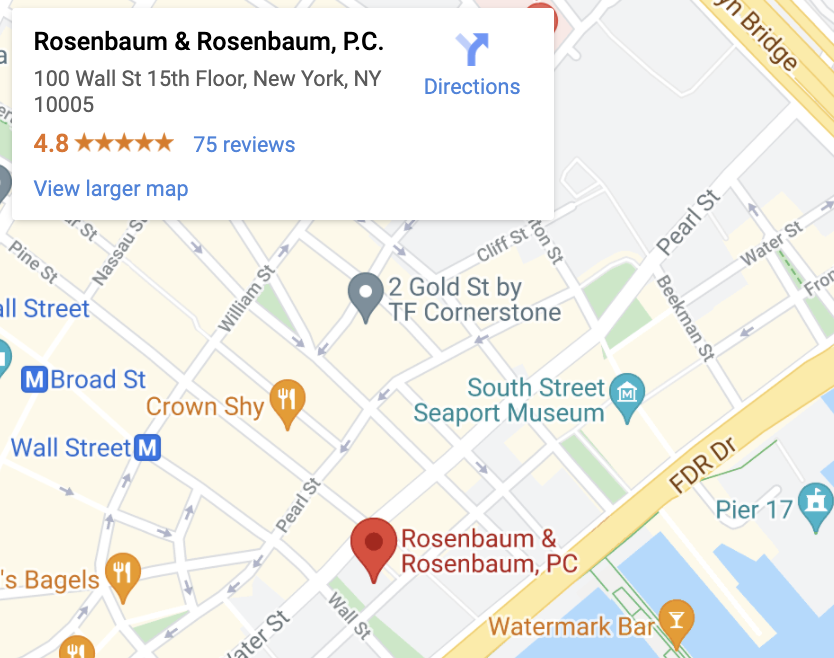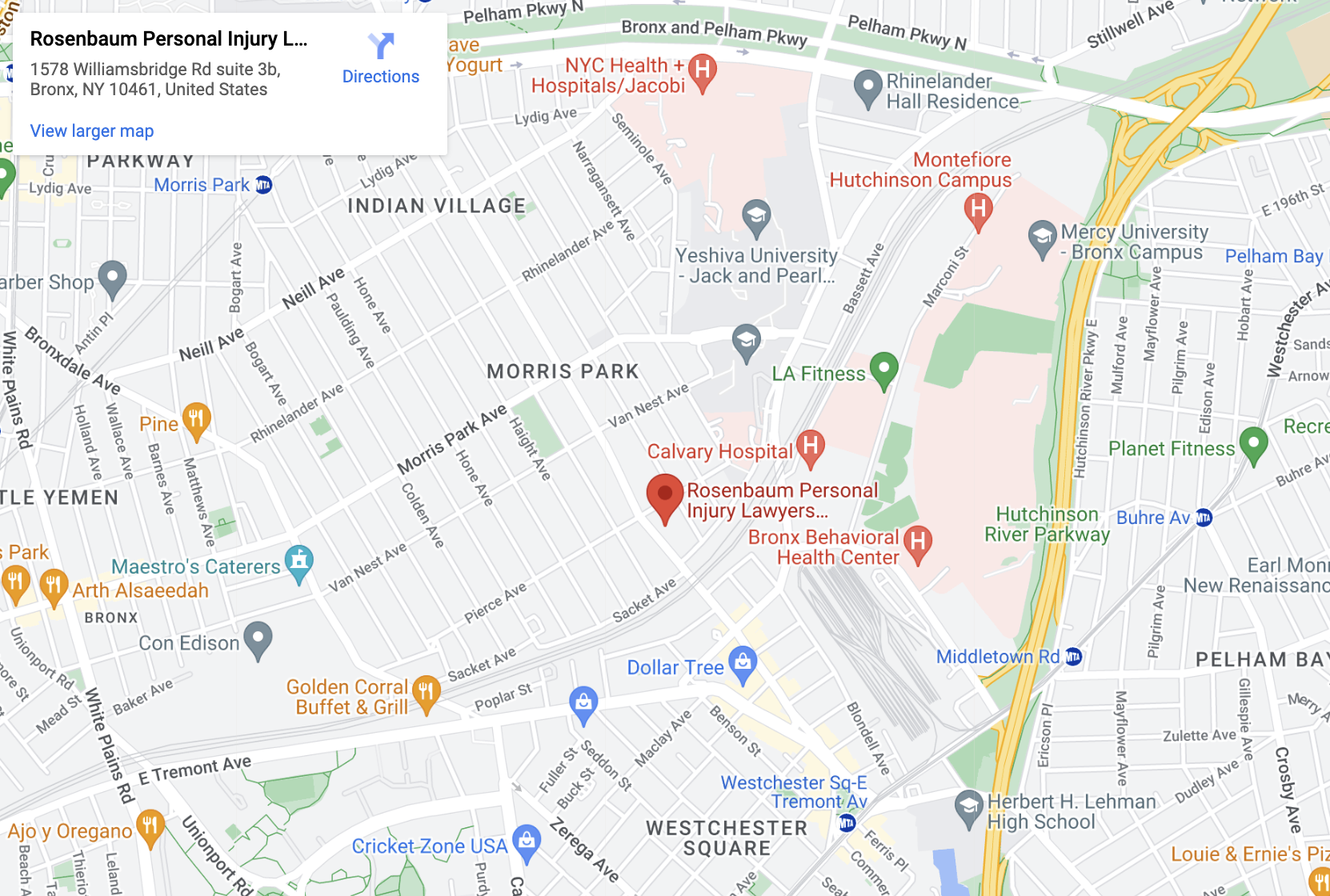How Are Pain and Suffering Damages Calculated in New York City?

If you suffer an injury due to someone else’s misconduct, you may be entitled to at least two forms of compensation—economic and non-economic damages. Economic damages, such as medical bills, are easy to quantify.
By contrast, non-economic damages, such as pain and suffering, are intangible. Although they are intangible, courts and insurance companies assign a value to them daily. Since pain and suffering damages often amount to more than half of the value of an entire personal injury claim, it is important not to underestimate them.
Table of Contents
What Are Pain and Suffering Damages?

In New York, pain and suffering include two components: physical and emotional pain. Physical pain includes:
- Broken bones,
- Back pain,
- Dislocated joints,
- Headaches,
- Neck pain,
- Internal organ damage,
- Nerve damage,
- Paralysis,
- Traumatic brain injury,
Examples of emotional pain include:
- Depression,
- Generalized anxiety disorder,
- Post-traumatic stress disorder (PTSD),
- Cognitive changes,
- Loss of sexual function,
- Mood swings; and
- Changes in sleeping habits.
Emotional pain must be traceable to a physical injury to justify compensation.
Settlement Calculators
A settlement calculator is a formula used by an insurance company to calculate pain and suffering damages. Insurance companies use one of two primary methods to calculate the value of pain and suffering damages.
The “Per Diem” Method
The “per diem” method of calculating pain and suffering damages is simple – set a daily rate for pain and suffering and multiply it by the number of days that the pain and suffering continued. The hard part, and the part where lawyers would argue, is determining the daily rate. Example: $300 per day for 180 days = $54,000.
The Multiplier Method
Another method of calculating pain and suffering damages involves multiplying your medical expenses by a “multiplier” of between 1 and 5. If your medical expenses were $30,000, for example, and your multiplier was 4, you would end up with $30,000 X 4 = $120,000.
You do not have to accept the insurance company’s calculation. It’s not part of the law; it’s an issue to negotiate.
Evidence
Intangible losses such as pain and suffering are inherently challenging to prove. Claimants commonly rely on the following types of evidence:
- Testimony from family members detailing the impact of your injuries;
- Your own testimony;
- Testimony from your doctor;
- Testimony from an expert witness on the painfulness of your injury;
- Your medical records;
- Photos of your injuries;
- Time off work;
- Your mental state;
- A written statement from your doctor; and
- Prescription drugs you have used to ease physical or emotional pain.
The pain arising from various ailments can be easy or difficult to prove, depending on the type of injury. In some cases, such as whiplash, it can be difficult to prove the existence of the injury.
Future Pain and Suffering
If you have not yet reached Maximum Medical Improvement (MMI) by the time you file your claim, you might be looking at years or even decades of continuing pain and suffering. Calculating the value of this suffering can be particularly difficult. Typically, claimants rely on expert witnesses to assist them with this calculation.
You must claim all of your damages, past and future, all at once – you cannot come back to ask for more money if you run out years from now.
Limitations on Pain and Suffering Damages
New York pain and suffering damages are subject to numerous potential limitations, as described below.
Car Accidents and New York’s “No-Fault” System
New York’s no-fault auto insurance system applies to car accidents. Under this system, you look to your own Personal Injury Protection (PIP) insurance policy to pay for most of your medical expenses and lost earnings.
You cannot file a lawsuit or claim damages for pain and suffering unless your injuries are “serious.” Under New York law, a “serious” injury means:
- A significant disfigurement;
- A broken bone;
- A permanent limitation of use of a body organ or appendage;
- A significant limitation on your use of at least one bodily function or system; or
- Complete disability for at least 90 days.
If your injuries qualify as “serious” under one of the foregoing criteria, you can file a third-party claim against the defendant’s insurance policy or file a personal injury lawsuit against the defendant. You will have to prove fault, however.
Fortunately, New York law requires its drivers to carry at least $25,000 per person and $50,000 per accident in personal injury liability insurance. New Yorkers must also carry at least $10,000 in property damage liability insurance.
Comparative Negligence
New York applies a “pure comparative negligence” system when more than one party is at fault. If you were partly to blame for your own injuries, the court will assign you a percentage of fault. It will then deduct that exact amount from the total amount of compensation you are eligible for.
Following are some examples of how you might be blamed for an accident:
- You slipped and fell due to a weak stairwell railing, but you were intoxicated at the time.
- The other driver ran a stop light, but you reacted too slowly to stop in time to avoid an accident.
- A motorcycle accident was the other driver’s fault, but you suffered head injuries because you failed to wear a helmet.
- You worsened your injuries because you failed to follow your doctor’s instructions.
This system applies no matter what your degree of fault. If the accident was 99% your fault and the other party was only 1% at fault, you can still receive 1% of your damages.
Workplace Injuries
If you suffered a work-related injury, you might fall within New York’s workers’ compensation system. Workers’ compensation does not allow you to file a lawsuit or seek pain and suffering damages. However, certain loopholes exist, especially if you can find a third party responsible for your injuries.
The “Pre-Existing Injury” Defense
Insurance companies love to claim that your injury was “pre-existing.” That means that your injuries predated the accident, and therefore the accident was not the cause of them. Insurance companies are particularly likely to make this claim if you suffered a certain type of injury, such as a back injury.
You Have Nothing To Lose By Talking to a New York City Personal Injury Lawyer
Evidence grows stale over time, and sooner or later, the statute of limitations will start to approach. The sooner you seek legal assistance, the more likely you will receive generous compensation from the opposing party.
You have nothing to lose by scheduling a free initial consultation with a New York City personal injury lawyer at Rosenbaum Personal Injury Lawyers. You needn’t worry that you can’t afford a lawyer. Most personal injury lawyers charge nothing upfront and nothing ever unless they win your case. After that, their fees come out of the compensation that the opposing party pays you. Call us at (212) 514-5007 or contact us online today.



